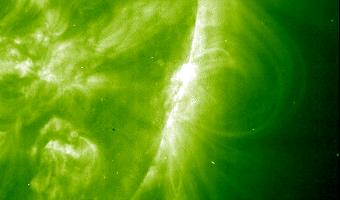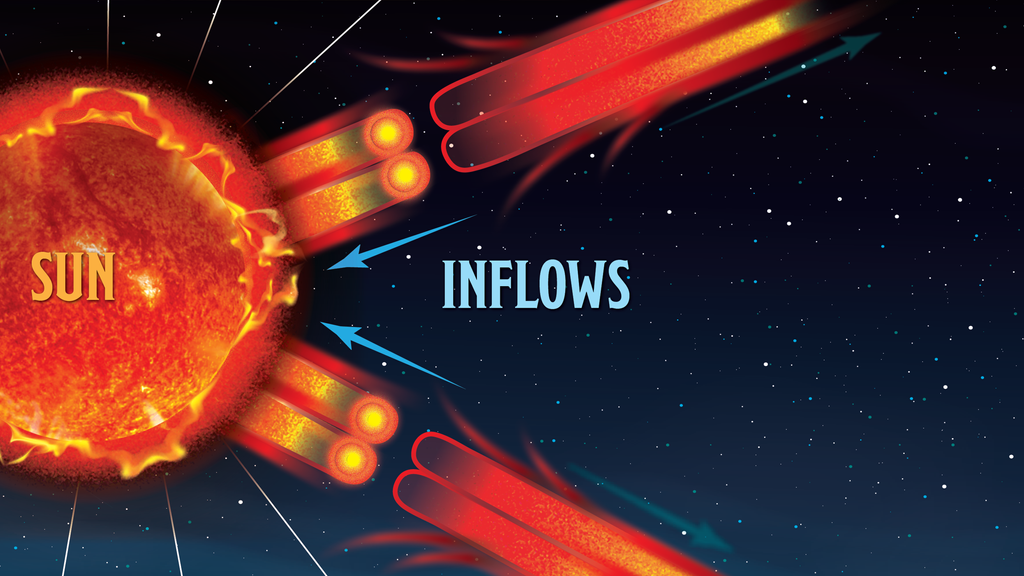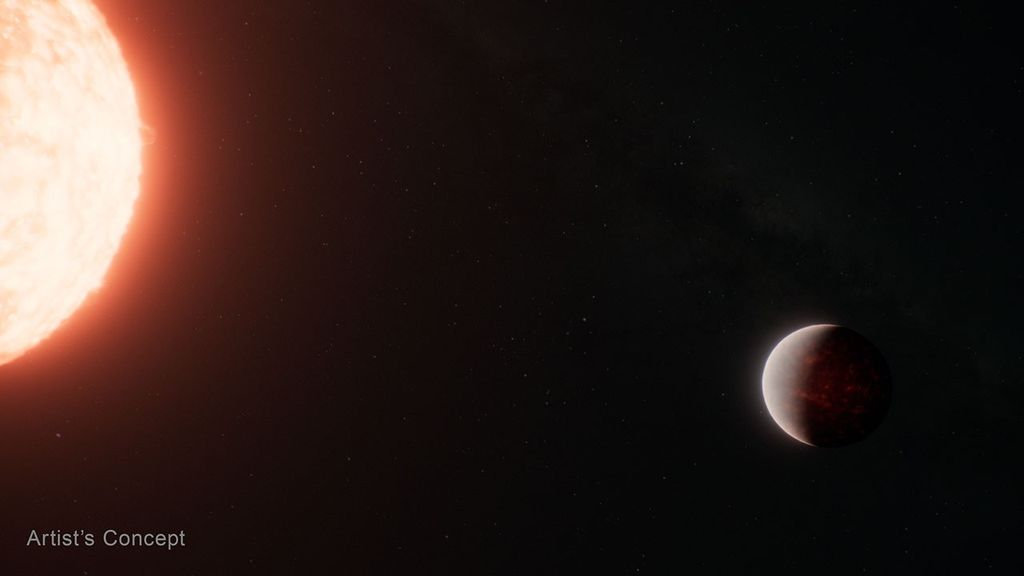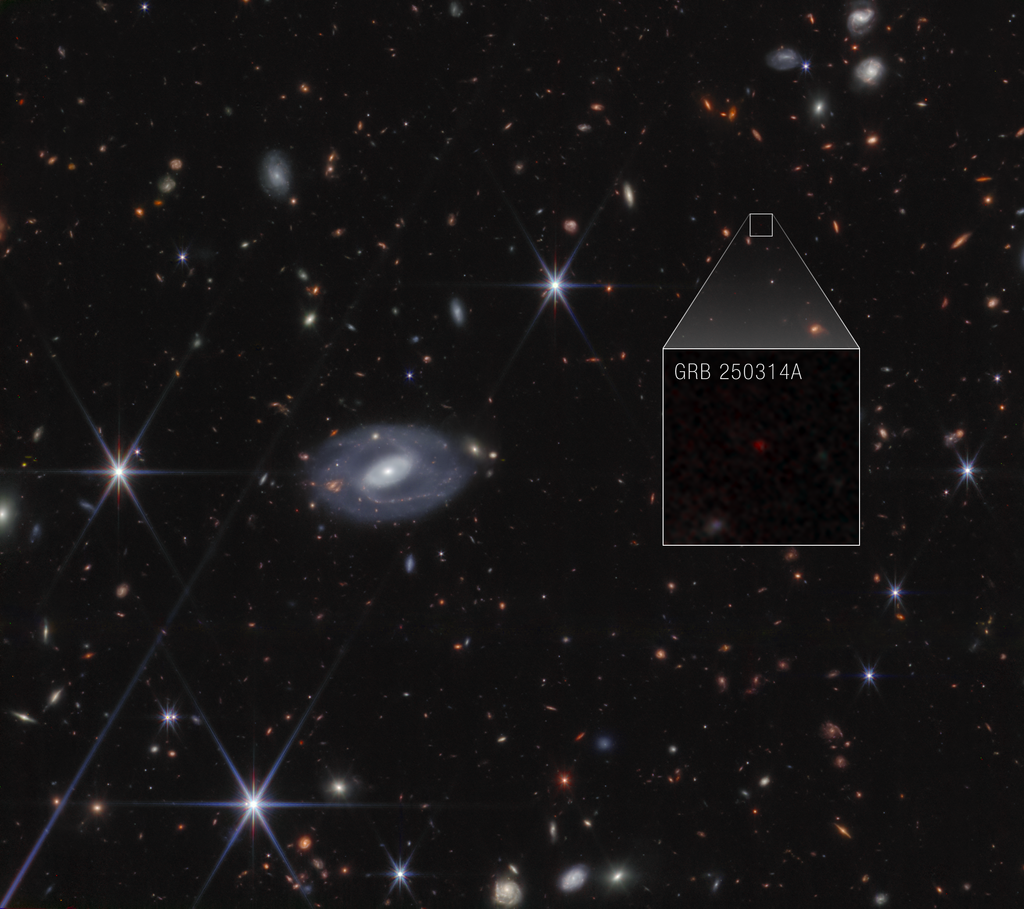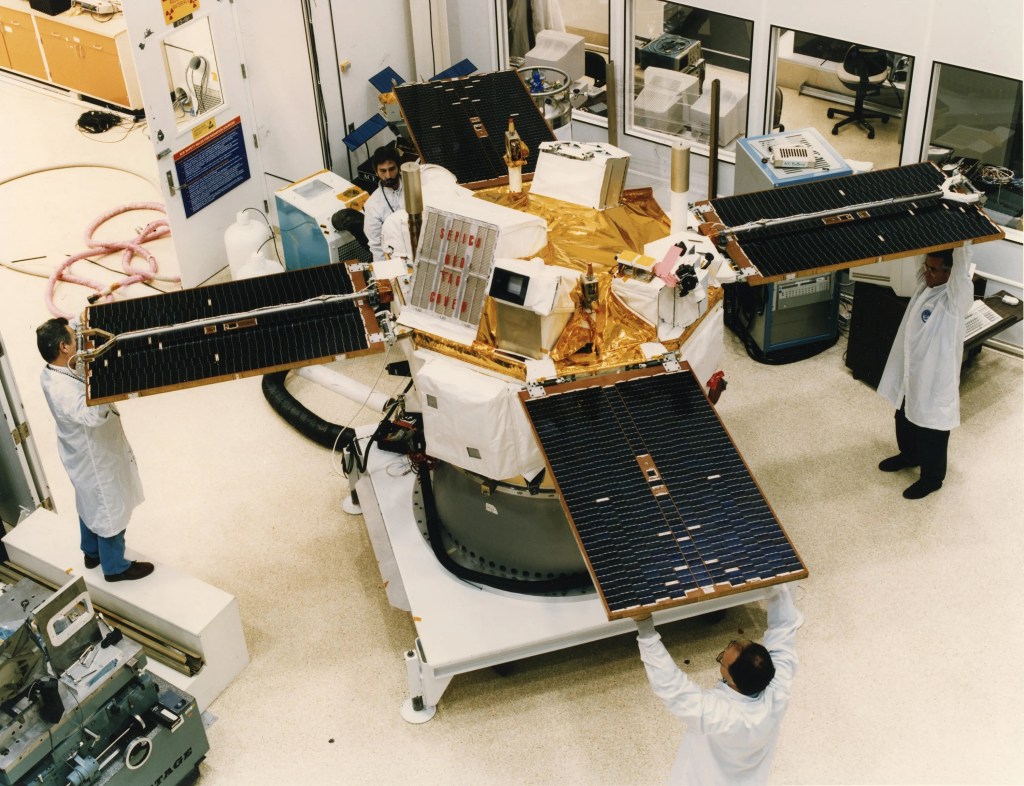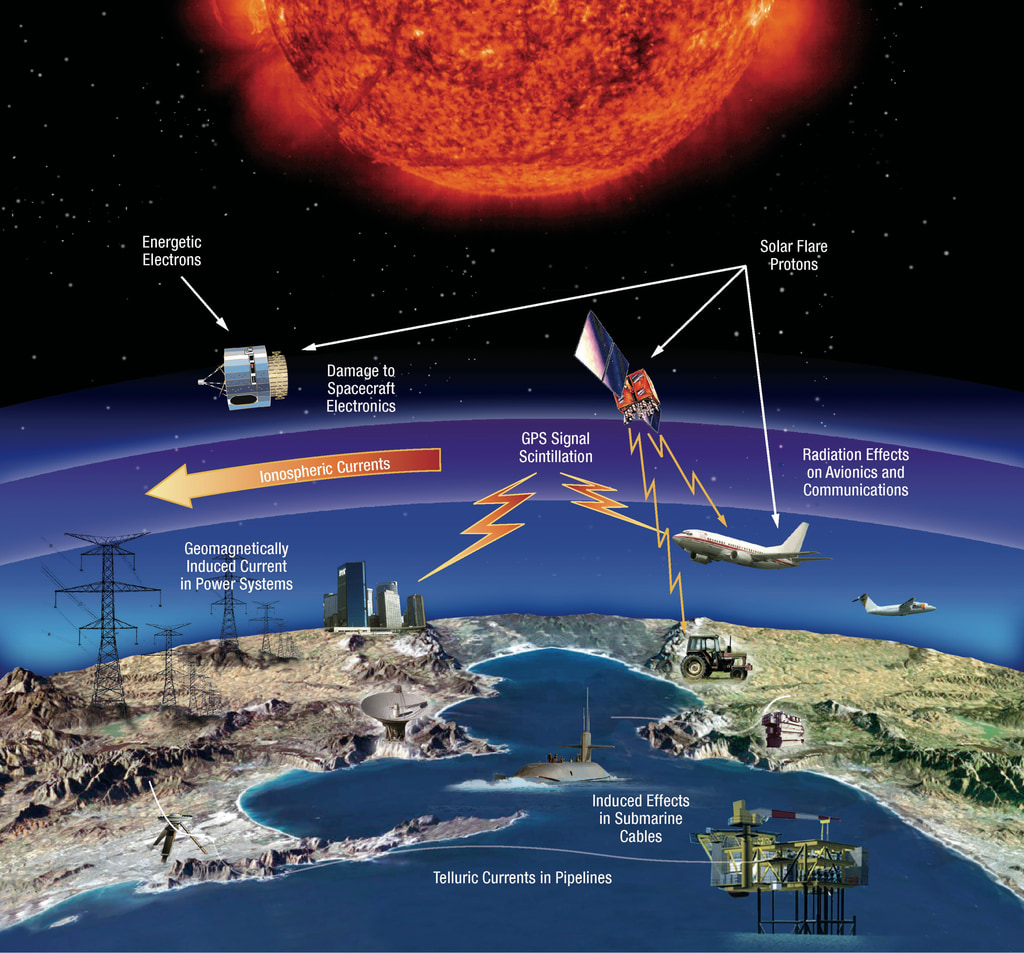Big Idea 2.3
Framework for Heliophysics Education
Quick Facts
The Sun is the primary light source in the solar system.
Guiding Questions
-
Introductory Learner (K-5)
Where do you find invisible light?1-PS4-2. Make observations to construct an evidence-based account that objects in darkness can be seen only when illuminated.
4-PS3-2. Make observations to provide evidence that energy can be transferred from place to place by sound, light, heat, and electric currents.
4-PS4-1. Develop a model of waves to describe patterns in terms of amplitude and wavelength and that waves can cause objects to move. -
Intermediate Learner (6-8)
How does light travel?MS-PS2-2. Plan an investigation to provide evidence that the change in an object’s motion depends on the sum of the forces on the object and the mass of the object.
MS-PS4-1. Use mathematical representations to describe a simple model for waves that includes how the amplitude of a wave is related to the energy in a wave.
MS-PS4-2. Develop and use a model to describe that waves are reflected, absorbed, or transmitted through various materials. -
Advanced Learner (9-12+)
How does light teach us about distant objects thousands of light years away?HS-ESS1-2. Construct an explanation of the Big Bang theory based on astronomical evidence of light spectra, motion of distant galaxies, and composition of matter in the universe.
HS-ESS1-3. Communicate scientific ideas about the way stars, over their life cycle, produce elements.
HS-PS1-1. Use the periodic table as a model to predict the relative properties of elements based on the patterns of electrons in the outermost energy level of atoms.
HS-PS4-3. Evaluate the claims, evidence, and reasoning behind the idea that electromagnetic radiation can be described either by a wave model or a particle model, and that for some situations one model is more useful than the other.

Related Topics By Level For Communicating Heliophysics
Electromagnetic Spectrum
What should learners know about this topic at each level?
Introductory: Electromagnetic energy travels in waves from very long radio waves to very short gamma rays. Humans can only see visitble light. When you tune your radio, watch TV, send a text message, or pop popcorn in a microwave oven, you are using electromagnetic energy. NASA's scientific instruments use the full range of the electromagnetic spectrum to study the Earth, the solar system, and the universe beyond.
Intermediate: Spectroscopy is the science of reading light to determine the size, distance, spin and chemical composition of distant objects in space. There are a great variety of electromagnetic waves: radio waves, microwaves, infrared waves, visible light, ultraviolet rays, X-rays, and gamma rays. These wavelengths vary from radio waves, the longest, to gamma rays, the shortest. The Sun emits all these types of electromagnetic waves, though in different amounts for various wavelengths. NASA spacecraft use spectrometers to study the composition, physical structure and electronic structure of matter at the atomic, molecular and macro scale, and over astronomical distances.
Advanced: Life is adapted to conditions on the Earth, including an intensity of electromagnetic waves from the Sun that allows water to be present in the liquid state. When electrically charged objects undergo a change in motion, they produce electromagnetic waves around them. Magnetic forces are very closely related to electric forces and are thought of as different aspects of a single electromagnetic force. Moving electrically charged objects produces magnetic forces and moving magnets produces electric forces. In empty space, all electromagnetic waves move at the same speed - the speed of light.
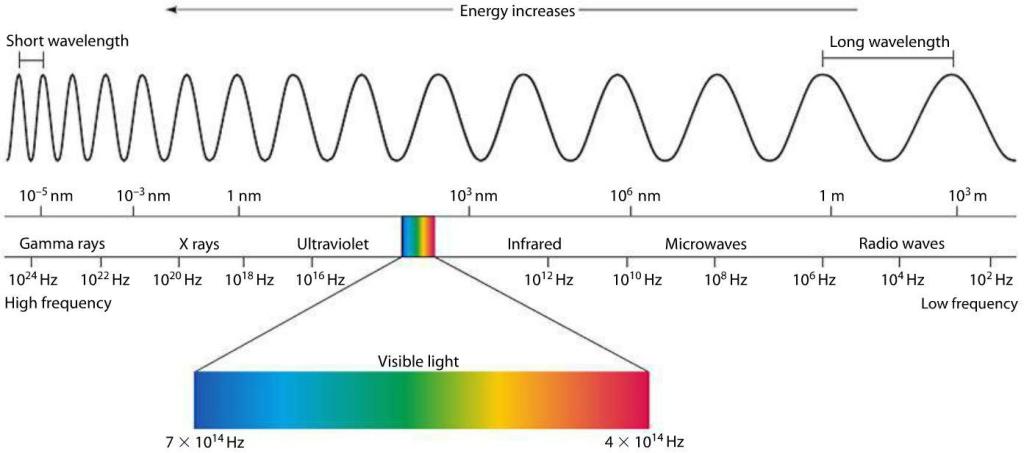
Light
What should learners know about this topic at each level?
Introductory: Electromagnetic energy travels in waves from very long radio waves to very short gamma rays. Humans can only see visitble light. When you tune your radio, watch TV, send a text message, or pop popcorn in a microwave oven, you are using electromagnetic energy. NASA’s scientific instruments use the full range of the electromagnetic spectrum to study the Earth, the solar system, and the universe beyond.
Intermediate: Spectroscopy is the science of reading light to determine the size, distance, spin and chemical composition of distant objects in space. There are a great variety of electromagnetic waves: radio waves, microwaves, infrared waves, visible light, ultraviolet rays, X-rays, and gamma rays. These wavelengths vary from radio waves, the longest, to gamma rays, the shortest. The Sun emits all these types of electromagnetic waves, though in different amounts for various wavelengths. NASA spacecraft use spectrometers to study the composition, physical structure and electronic structure of matter at the atomic, molecular and macro scale, and over astronomical distances.
Advanced: Life is adapted to conditions on the Earth, including an intensity of electromagnetic waves from the Sun that allows water to be present in the liquid state. When electrically charged objects undergo a change in motion, they produce electromagnetic waves around them. Magnetic forces are very closely related to electric forces and are thought of as different aspects of a single electromagnetic force. Moving electrically charged objects produces magnetic forces and moving magnets produces electric forces. In empty space, all electromagnetic waves move at the same speed – the speed of light.
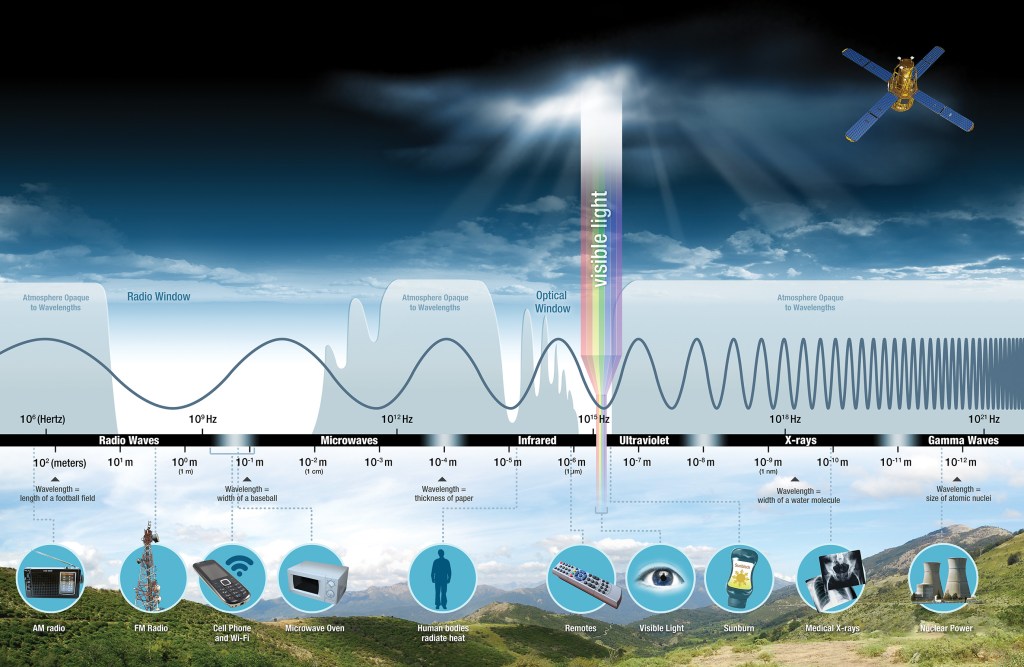
Photosynthesis
What should learners know about this topic at each level?
Introductory: Plants grow and thrive through photosynthesis, a process that converts sunlight into energy.
Intermediate: Photosynthesis is the process by which plants use sunlight, water, and carbon dioxide to create oxygen and energy in the form of sugar.
Advanced: During photosynthesis, plants emit what is called fluorescence – light invisible to the naked eye but detectable by satellites orbiting hundreds of miles above Earth. NASA scientists have now established a method to turn this satellite data into global maps of the subtle phenomenon in more detail than ever before.

Radiation
What should learners know about this topic at each level?
Introductory: Outside the protective cocoon of the Earth’s atmosphere is a universe full of radiation – it is all around us. Radiation can be created by humans (microwaves, cell phones, radios, light bulbs, diagnostic medical applications such as x-rays) or naturally occurring.
Intermediate: Radiation is a form of energy that is emitted in the form of rays, electromagnetic waves, and/or particles. Most of the radiation that the Sun emits is in the form of visible light. Energy appears in different forms and can be transformed and transported within the Sun’s system.
Advanced: Naturally occuring sources of radiation are the Sun, radioactive elements in the Earth’s crust, radiation trapped in the Earth’s magnetic field, stars, and other astrophysical objects like quasars or galactic centers). In some cases, radiation can be seen (visible light) or felt (infrared radiation), while other forms—like x-rays and gamma rays—are not visible and can only be observed with special equipment. Space radiation is different from the kinds of radiation we experience here on Earth. Space radiation is comprised of atoms in which electrons have been stripped away as the atom accelerated in interstellar space to speeds approaching the speed of light – eventually, only the nucleus of the atom remains.
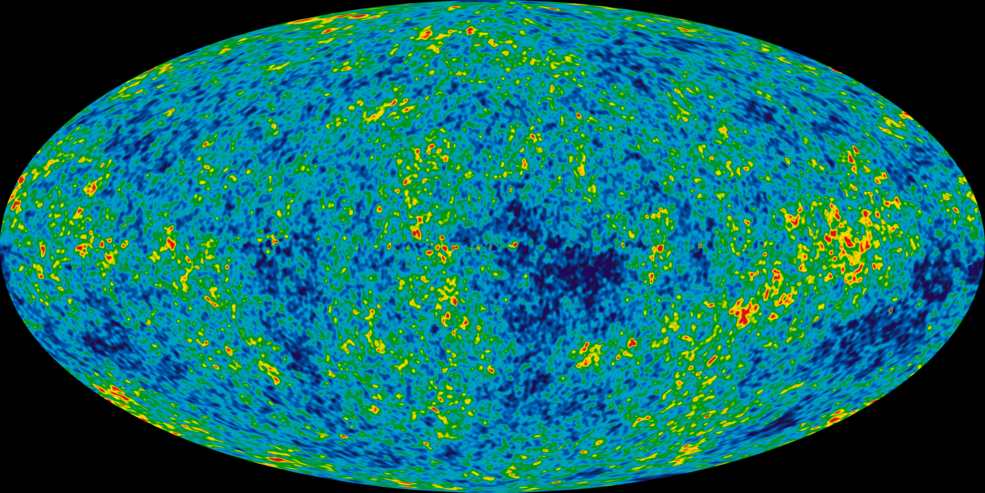
Spectroscopy
What should learners know about this topic at each level?
Introductory: Electromagnetic energy travels in waves from very long radio waves to very short gamma rays. Humans can only see visible light. When you tune your radio, watch TV, send a text message, or pop popcorn in a microwave oven, you are using electromagnetic energy. NASA's scientific instruments use the full range of the electromagnetic spectrum to study the Earth, the solar system, and the universe beyond.
Intermediate: Spectroscopy is the science of reading light to determine the size, distance, spin and chemical composition of distant objects in space. There are a great variety of electromagnetic waves: radio waves, microwaves, infrared waves, visible light, ultraviolet rays, X-rays, and gamma rays. These wavelengths vary from radio waves, the longest, to gamma rays, the shortest. The Sun emits all these types of electromagnetic waves, though in different amounts for various wavelengths. NASA spacecraft use spectrometers to study the composition, physical structure and electronic structure of matter at the atomic, molecular and macro scale, and over astronomical distances.
Advanced: Life is adapted to conditions on the Earth, including an intensity of electromagnetic waves from the Sun that allows water to be present in the liquid state. When electrically charged objects undergo a change in motion, they produce electromagnetic waves around them. Magnetic forces are very closely related to electric forces and are thought of as different aspects of a single electromagnetic force. Moving electrically charged objects produces magnetic forces and moving magnets produces electric forces. In empty space, all electromagnetic waves move at the same speed - the speed of light.
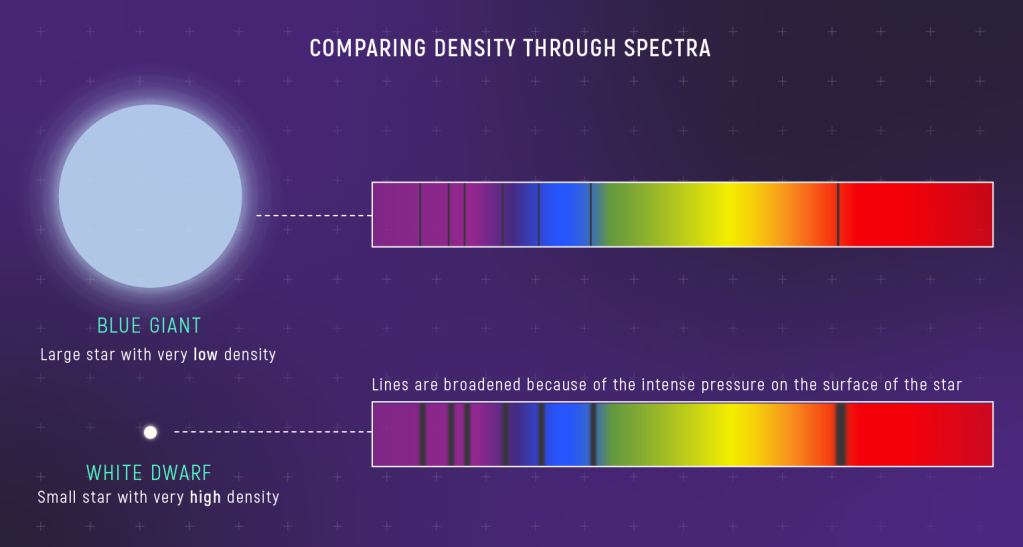
Heliophysics Resource Database
Use the guiding questions above to explore resources at each level or go directly to our database to search for resources by level, NGSS performance expectation, topic, and mission.
Learn More